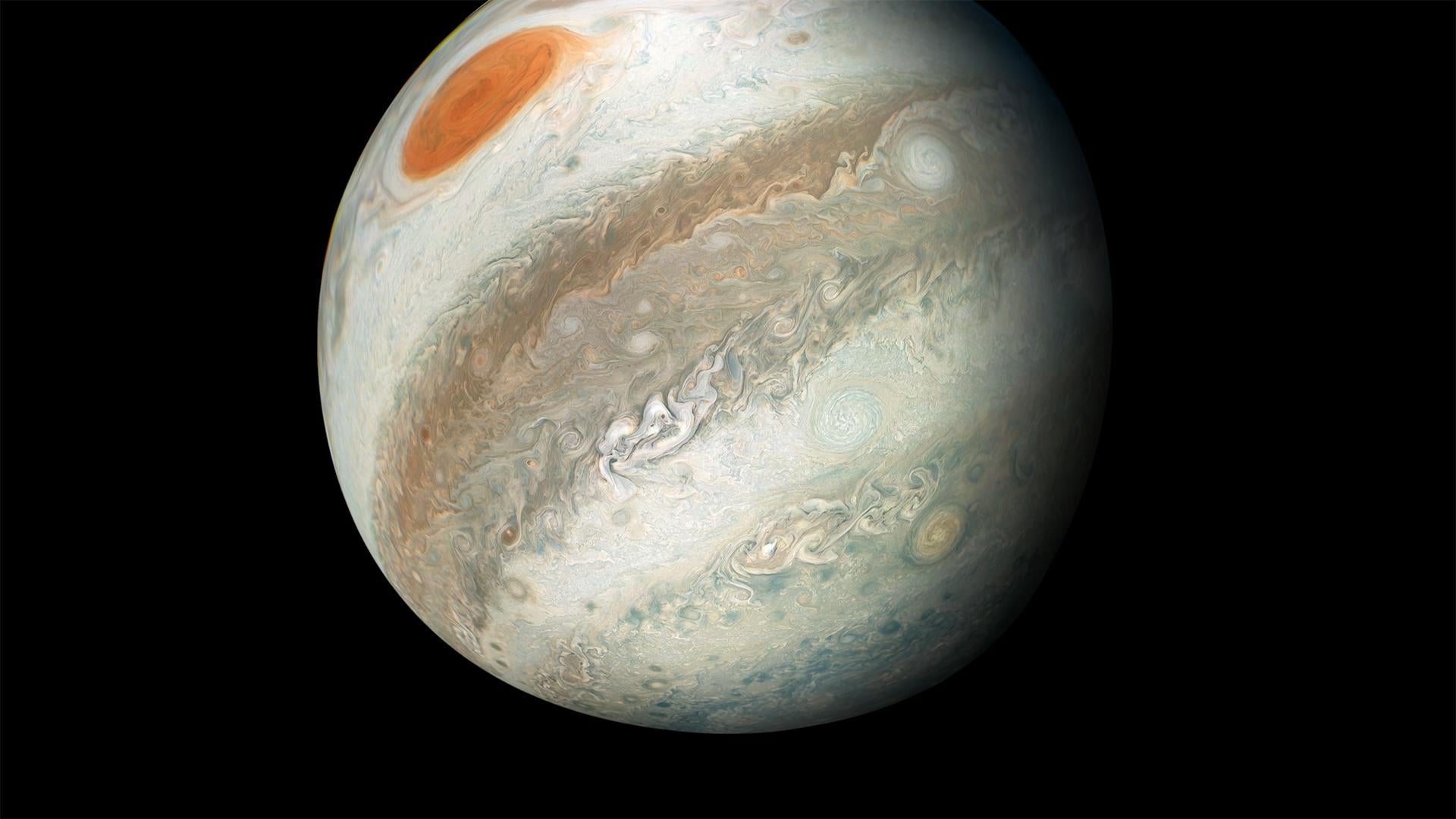NASA’s Juno satellite captured Jupiter’s red spot from a new angle
Jupiter’s best-known feature, its red beauty mark so large it could swallow two or three Earths, was pictured in newly released images in a way it’s rarely been before.


Jupiter’s best-known feature, its red beauty mark so large it could swallow two or three Earths, was pictured in newly released images in a way it’s rarely been before.
Images from the Hubble telescope and the two Voyager missions typically rendered the gas giant’s red spot as a sitting below the planet’s equator. In the photos released by NASA this month, the red spot, which has actually been slowly shrinking over the last 100 years, appears in an inverted position, due to the unique angle at which Juno captured it in its orbit.

The image was captured by “citizen scientists” who used publicly available data from Juno to create a true color image.
Juno has revealed many stunning details of Jupiter’s nooks and crannies since it began transmitting images in 2016. It is expected to end its mission later this year, when it will descend into Jupiter’s atmosphere, much like the Cassini spacecraft did in September of 2017. Here’s to hoping we see more stunning images of the solar system’s largest planet before then.